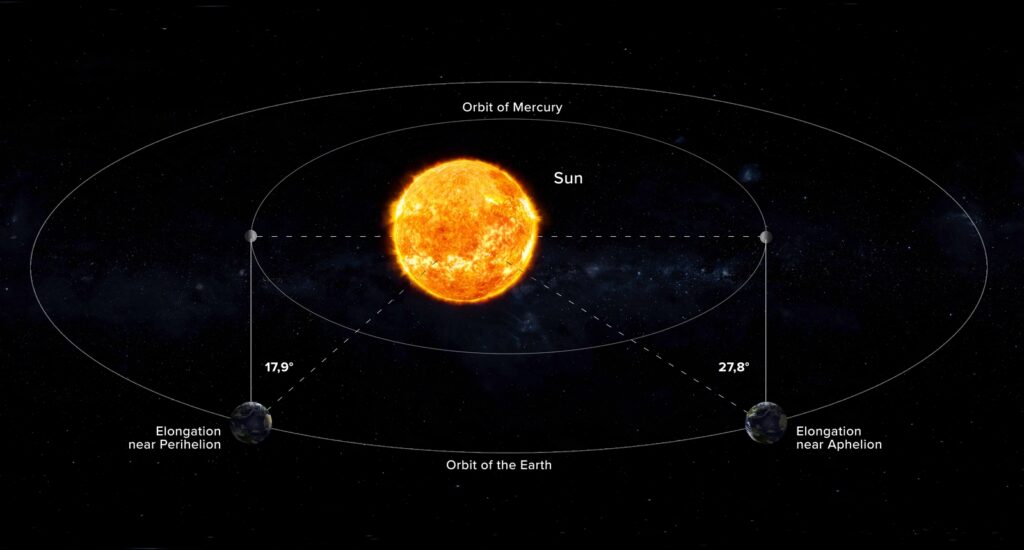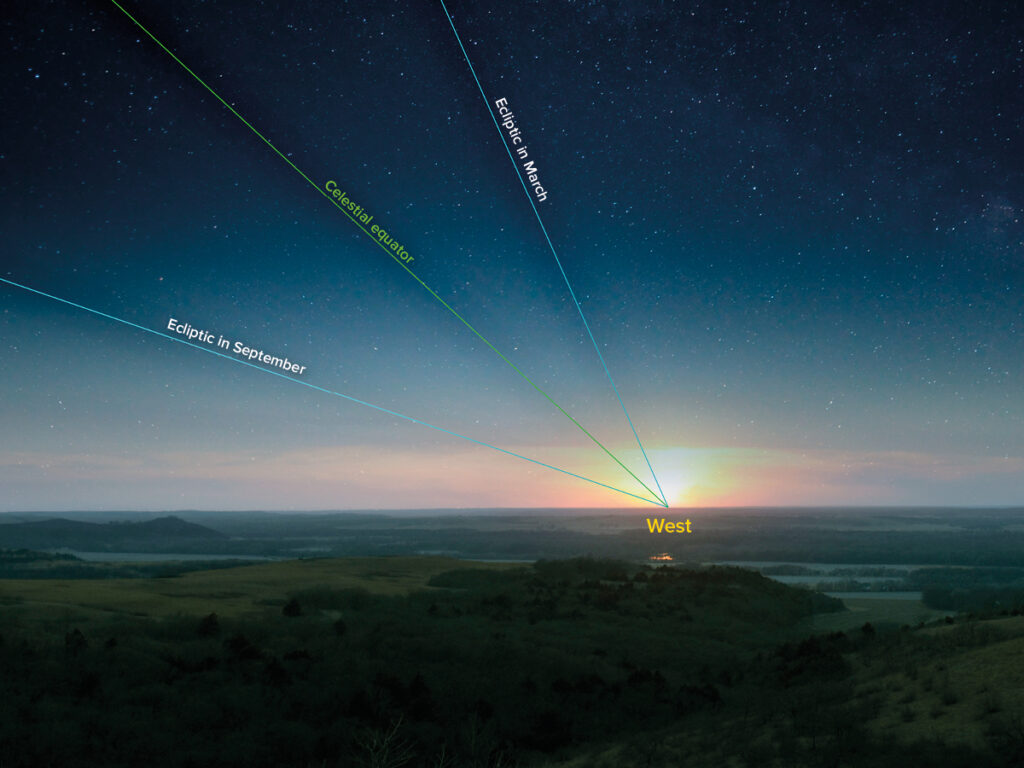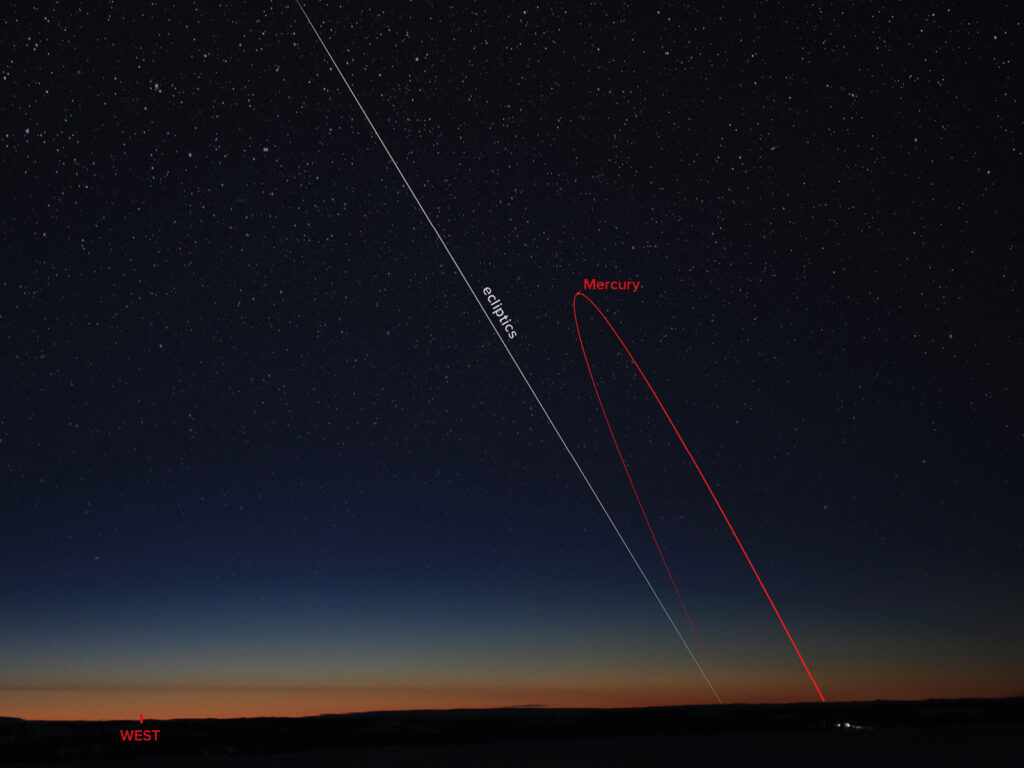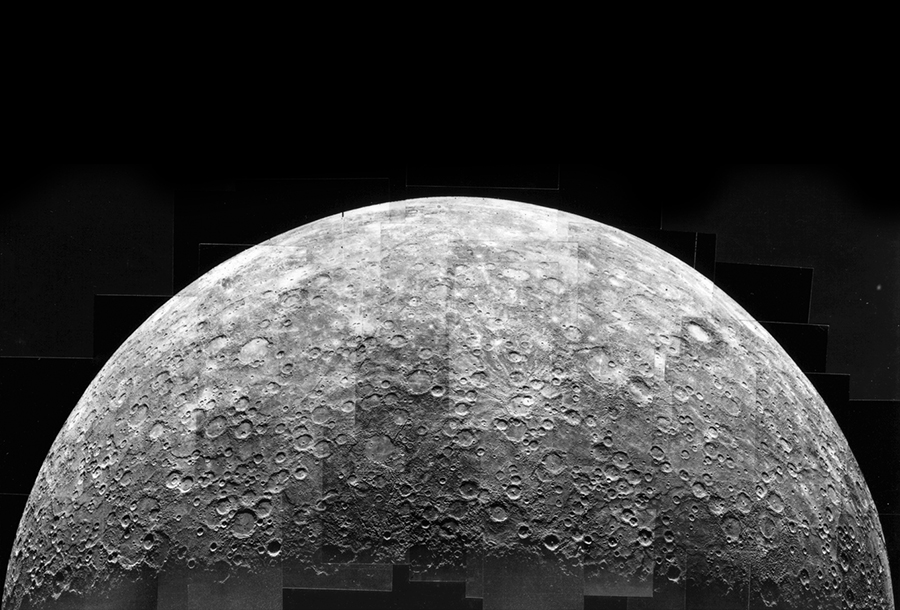Of the large planets of the Solar System, two — Mercury and Venus — are never in opposition from the point of view of ground observers. Since these bodies orbit within the Earth’s orbit (hence they are called inner planets), they are always in the sky relatively close to the Sun. However, if the “Morning Star” can move away from it by more than 45° and remains at a comfortable distance for observations for quite a long time, then in the case of Mercury, its visibility periods rarely exceed a month, and it needs to be “caught” low above the horizon shortly after sunset of our luminary or at dawn.This year, one of these periods of evening visibility of the smallest planet falls on April.
The angular distance between a celestial body and the Sun in astronomy is called elongation. If it is too small (less than 10° in total), the body must be very bright so that it can be seen in the near-solar halo. Even if the luminary has already disappeared below the horizon, this still does not mean successful observations: it is quite possible that the object we are looking for is also already below the horizon or simply too low, and its light is strongly absorbed by the earth’s atmosphere.
In any case, Mercury can be found in the sky only during those periods of time when its elongation reaches its maximum values. The only exception is its rather rare passage through the solar disk, the nearest of which will occur in November 2032. The greatest angular distance by which this planet can move away from the Sun from the point of view of ground observers is almost 28°. From simple geometric considerations, it is clear that at the same time it must be in aphelion (the point of its orbit furthest from the Sun). Another problem arises here: due to the mutual orientation of the Earth’s and Mercury’s orbits, such “aphelion elongations” occur when Mercury is visible in the morning in spring or in the evening in autumn. For residents of near-equatorial latitudes, this is insignificant — in fact, there is neither spring nor autumn. However, in the areas lying north of the 40th latitude, the situation is much more complicated.

With the greatest elongations in the spring, Mercury appears in the conditions of morning visibility, but at this time in the morning zodiac constellations such as Scorpio and Sagittarius culminate, which do not rise high enough in our latitudes. Therefore, the ecliptic — a conditional line on the celestial sphere along which the center of the solar disk moves and near which large planets are constantly located — turns out to be slightly inclined to the horizon. It often happens that the planet rises literally a few minutes before sunrise and it is almost impossible to see it. A similar situation occurs during the evening visibility in autumn: then Mercury, even being 26-27° from our luminary, sets almost simultaneously with it. Thus, we do not have the opportunity to fully observe the “aphelion” Mercurian elongations.

On April 11, Mercury moved away from the Sun by 19.5°. This is slightly more than the value of its “minimum” (perihelion) elongation, which is 17.9°. But on spring evenings, the “high” constellations of Gemini and Cancer culminate, so the inclination of the ecliptic to the horizon is close to the maximum possible, and besides, the planet will move noticeably north, which will further extend the visibility time. For observers at 50° north latitude, the interval between the end of civil twilight, when the solar disk sinks below the horizon by 6°, and the setting of Mercury in the period between April 3 and 20 will exceed an hour. With a clear sky, finding the “elusive planet” will not be so difficult. However, its brightness at the specified interval will gradually decrease from -1ᵐ to 1ᵐ, and the phase will decrease from 0.73 to 0.16. At the same time, the diameter of the disk will grow — from 6 to 10 arcseconds. As a guide for the search, you can use bright Venus: Mercury should be searched to the right and below. On the evening of April 21, a thin crescent of the new moon will appear at 4° from it.

It is worth adding here that in the Southern Hemisphere, where the seasons are opposite to “ours”, Mercury is most convenient to observe in the greatest elongations, so its inhabitants have a significant advantage in this sense. However, in the era of automatic interplanetary vehicles, this no longer matters so much: most of what is now known about the planet closest to the Sun, we have learned thanks to the American MESSENGER probe, which worked in its vicinity from March 2011 to April 2015.

There is also a legend that the famous astronomer Nicolaus Copernicus was never able to see Mercury with his own eyes in his entire life. According to some historians of science, in fact, he did not try to do this, preferring to theorize about the movement of celestial bodies. Actually, those years of his activity, when he began to actively engage in astronomy, were spent mainly in the north of Europe. There, the conditions for observing the smallest planet are quite unfavorable. Have you ever, dear readers, observed Mercury?
Follow us on Twitter to get the most interesting space news in time
https://twitter.com/ust_magazine

